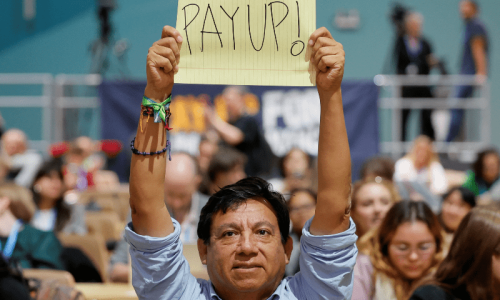TEHRAN: For Iranians whose icons since the Islamic Revolution have been stern-faced clergy, Gen Qassem Soleimani was a popular figure of national resilience in the face of four decades of US pressure.
For the US and Israel, he was a shadowy figure in command of Iran’s proxy forces, responsible for fighters in Syria backing President Bashar Assad and for the deaths of American troops in Iraq.
Solemani survived the horror of Iran’s long war in the 1980s with Iraq to take control of the Revolutionary Guards elite Quds Force, responsible for the Islamic Republic’s campaigns abroad.
Relatively unknown in Iran until the 2003 US invasion of Iraq, Soleimani’s popularity and mystique grew after American officials called for his killing. A decade and a half later, Soleimani had become Iran’s most recognizable battlefield commander, ignoring calls to enter politics but growing as powerful, if not more, than its civilian leadership.
Soleimani’s luck finally ran out after he was rumored dead several times over the years. There was a 2006 airplane crash that killed other military officials in northwestern Iran and a 2012 bombing in Damascus that killed top aides of Assad. More recently, rumors circulated in November 2015 that Soleimani had been killed or seriously wounded leading forces loyal to Assad as they fought around Syria’s Aleppo.
Soleimani’s early years are a bit of a mystery. Born March 11, 1957, Iranians say Soleimani grew up near the mountainous and historic Iranian town of Rabor, famous for its forests, its apricot, walnut and peach harvests and its brave soldiers. The US State Department has said he was born in the Iranian religious capital of Qom.
Little is known about his childhood, though Iranian accounts suggest Soleimanis father was a peasant who received some land under the Shah Mohammad Reza Pahlavi, the monarch who was toppled in the 1979 Islamic Revolution.
By the time he was 13, Soleimani was working construction, later as an employee of the Kerman Water Organisation. After Iran’s Islamic Revolution swept the shah from power, Soleimani joined the Revolutionary Guard. He deployed to Iran’s northwest with forces that put down Kurdish unrest.
Soon after, Iraq invaded Iran and began the two countries long, bloody eight-year war. The fighting killed more than 1 million people and saw Iran send waves of lightly armed troops into minefields and the fire of Iraqi forces, including teenage soldiers. Solemanis unit and others also were attacked by Iraqi chemical weapons.
For several years after the Iraq-Iran war, Soleimani largely disappeared from public view, something analysts attribute to his wartime disagreements with Hashemi Rafsanjani, who served as Iran’s president from 1989 to 1997. But after Rafsanjani, Soleimani became head of the Quds force. He also grew so close to Khamenei that the Supreme Leader officiated the wedding of the generals daughter.
As chief of the Quds Foce or Jerusalem Force Solemani oversaw the Guards foreign operations and soon would come to the attention of Americans following the 2003 invasion of Iraq and the overthrow of Saddam Hussein.
In secret US diplomatic cables released by WikiLeaks, US officials openly discussed Iraqi efforts to reach out to Soleimani to stop rocket attacks on the highly secured Green Zone in Baghdad in 2009. Another cable in 2007 outlines then-Iraqi President Jalal Talabani offering a US official a message from Soleimani acknowledging having hundreds of agents in the country while pledging, I swear on the grave of (the late Ayatollah Ruhollah) Khomeini I haven’t authorised a bullet against the US.
US officials at the time dismissed Soleimanis claim as they saw Iran as both an arsonist and a fireman in Iraq, controlling some militias while simultaneously stirring dissent and launching attacks. US forces blamed the Quds Force for an attack in Karbala that killed five American troops, as well as for training and supplying the bomb makers whose improvised bombs made IED improvised explosive device a dreaded acronym among soldiers.
Published in Dawn, January 4th, 2020














































